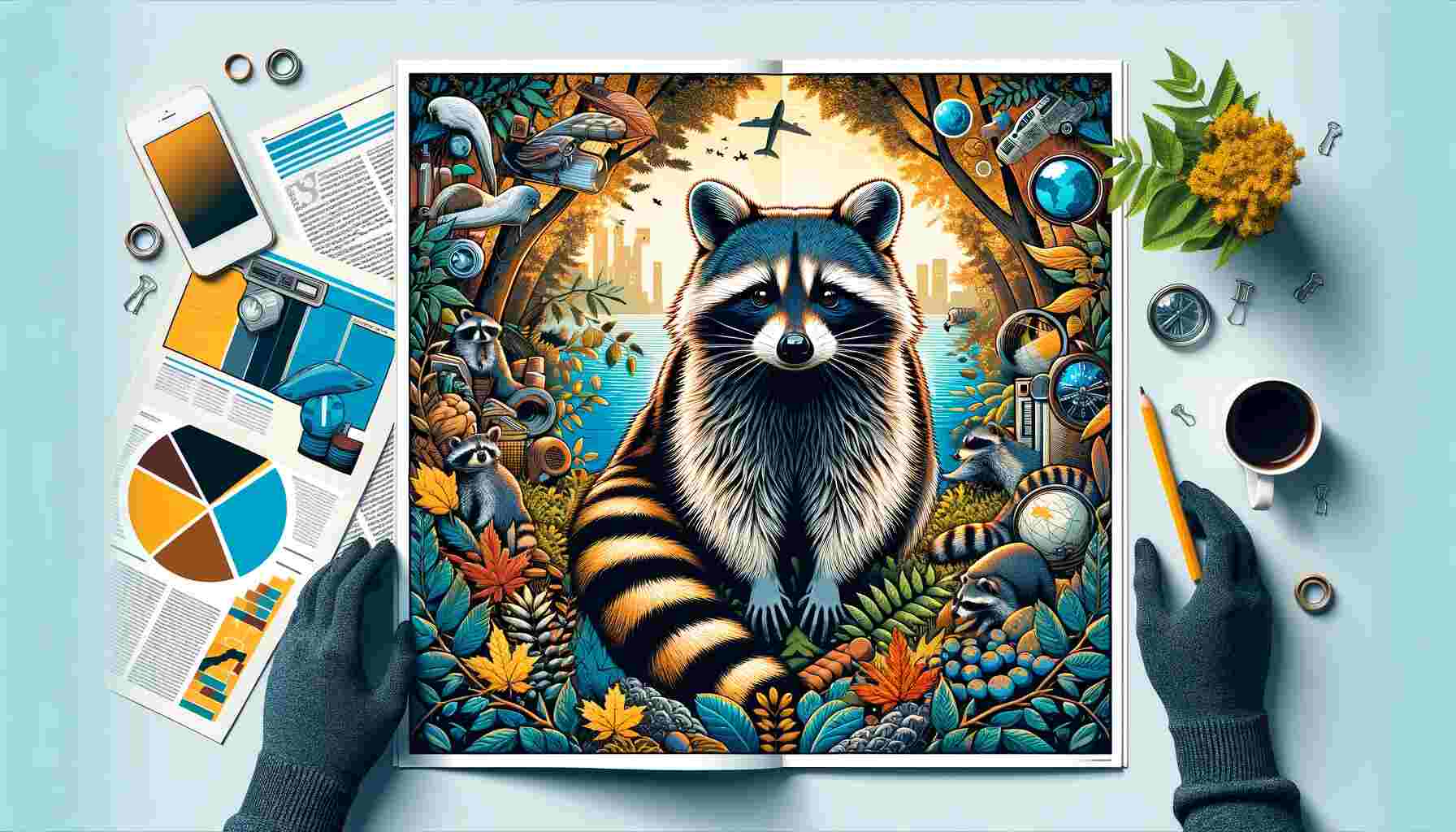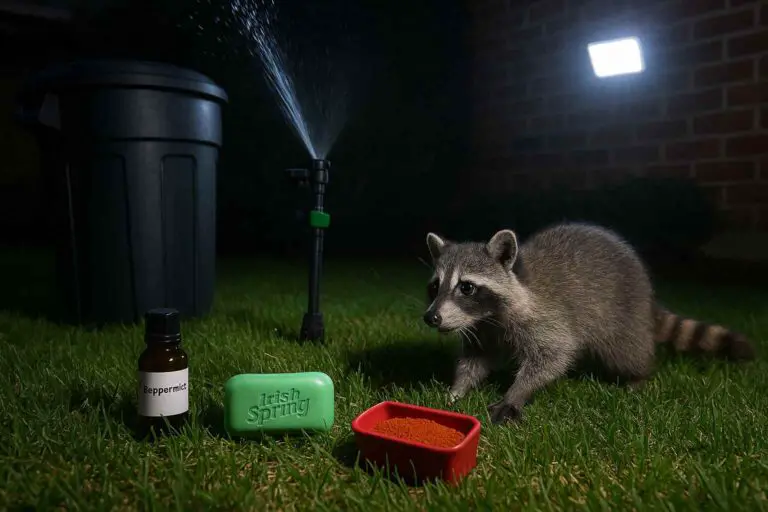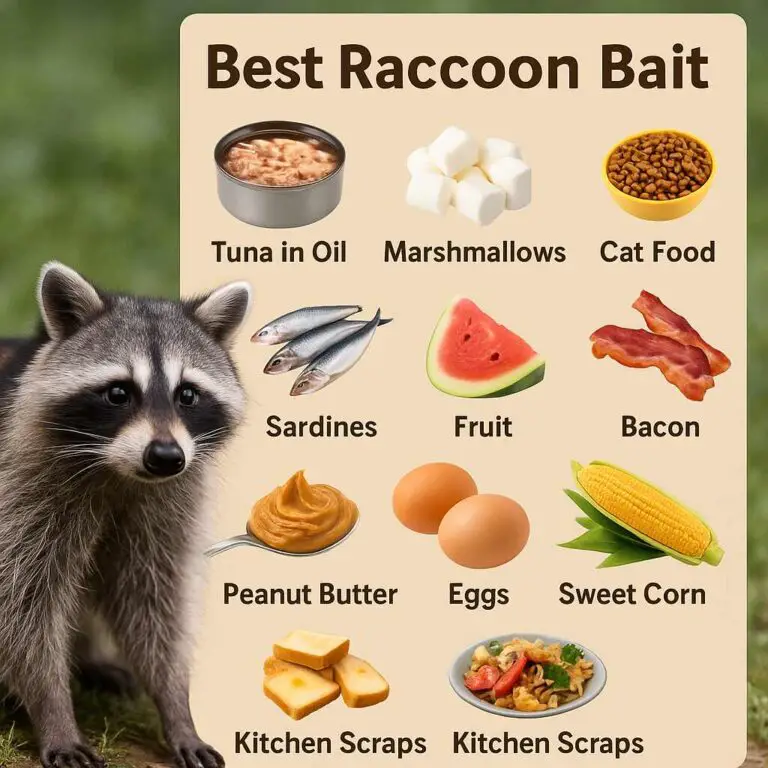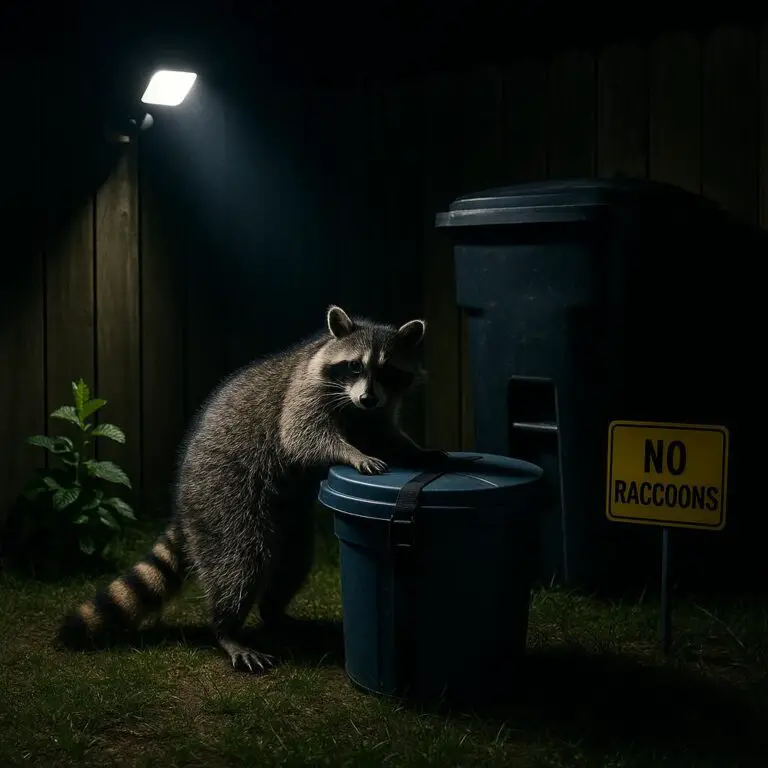The raccoon, scientifically known as Procyon lotor, is a North American mammal known for its grayish coat, dexterous front paws, facial mask, and ringed tail. It’s the largest member of the procyonid family, with a body length of 40 to 70 cm and a weight of 5 to 26 kg. Raccoons are intelligent and omnivorous, with a diet consisting of 40% invertebrates, 33% plants, and 27% vertebrates.
Originally found in forests, raccoons have adapted to various environments, including urban areas. In Europe, they are considered an invasive species since 2016, and their import and release are prohibited in the European Union.
Recent studies suggest that raccoons exhibit social behavior, with related females sharing territory and unrelated males forming groups during mating season. They have a varied home range, from 3 hectares for urban females to 5,000 hectares for males in prairies.
Raccoons reproduce after a gestation period of about 65 days, giving birth to two to five kits in spring. In the wild, their life expectancy is only 1.8 to 3.1 years due to hunting and vehicular accidents.
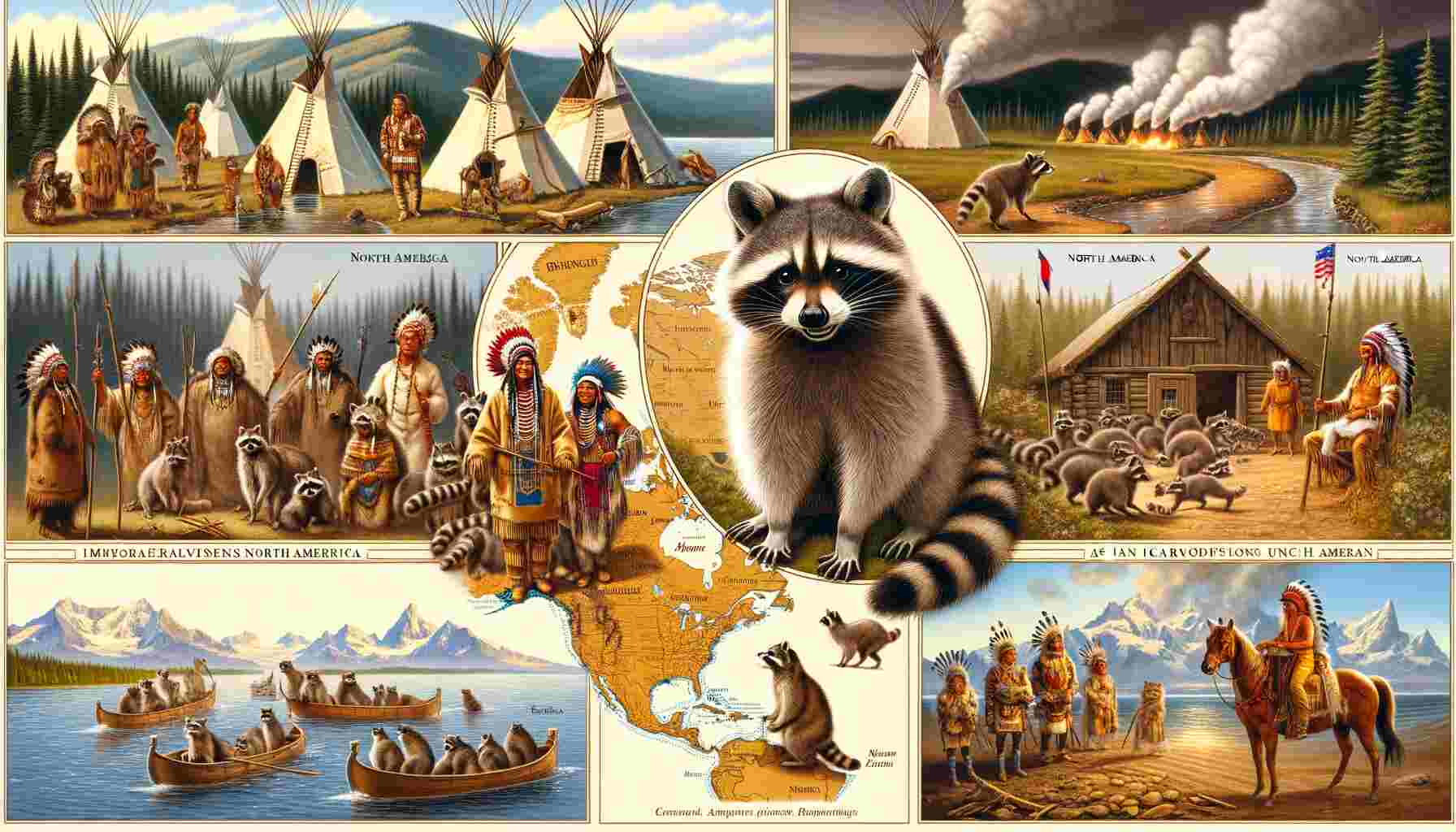
2. Historical Background
Raccoons have a long history in North America, with fossil evidence suggesting their presence dating back 10 million years. Native American cultures often revered them as clever and adaptable creatures. European settlers later encountered raccoons and introduced them to Europe and Asia, where they are now considered invasive species.
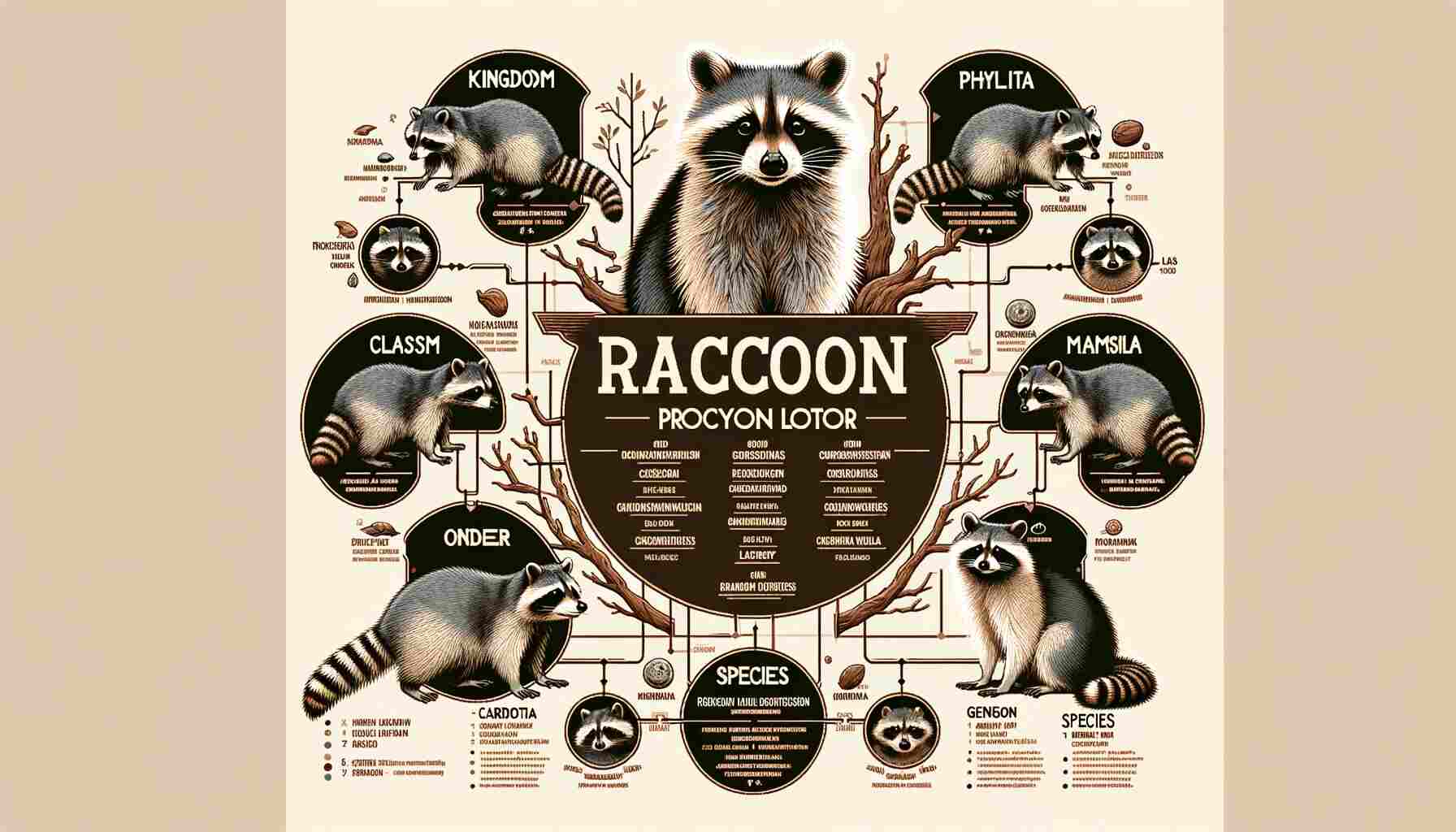
Scientific Classification
1. Taxonomy
Raccoons belong to the following taxonomic classification:
- Kingdom: Animalia
- Phylum: Chordata
- Class: Mammalia
- Order: Carnivora
- Family: Procyonidae
- Genus: Procyon
- Species: Procyon lotor
2. Common and Scientific Names
- Common Name: Raccoon
- Scientific Name: Procyon lotor
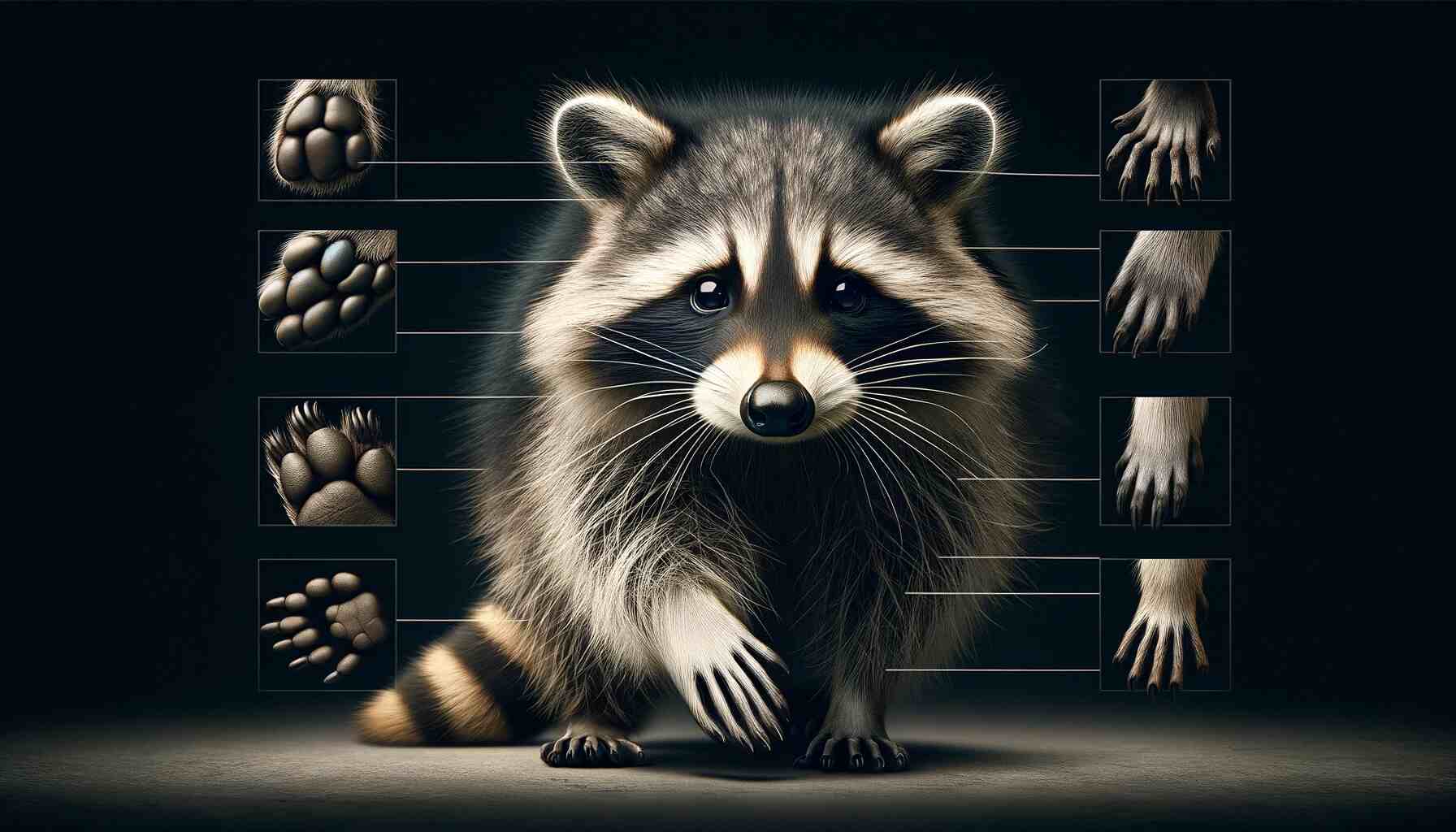
Physical Characteristics
Raccoons are unique creatures, and understanding their physical traits can be a breeze:
- Size Matters: Raccoons typically measure from 16 to 28 inches from head to hindquarters. Add their bushy tail, which can be up to 15.7 inches long (but usually around 9.8 inches).
- Weighty Matters: Adult raccoons vary in weight, from as light as 4.4 pounds to as heavy as 57.3 pounds! On average, they weigh between 11 to 26 pounds, with males being about 15 to 20% heavier than females. In winter, they can double their weight thanks to stored fat. The biggest recorded raccoon weighed a whopping 63 pounds!
- Distinctive Look: What really sets them apart is their cool black fur around the eyes, making them look a bit like little bandits, hence their mischievous reputation. They’ve also got slightly rounded ears with white fur. This unique facial coloring helps them recognize other raccoons and might even improve their night vision.
- Getting Around: Raccoons are not sprinters or high jumpers, but they can reach speeds of 9.9 to 14.9 mph. They’re fantastic swimmers and can stay in the water for hours. Fun fact: when they need to climb down a tree headfirst, they rotate their hind feet backward to make it happen!
- Temperature Masters: Raccoons have a clever way to stay cool – they can both sweat and pant to regulate their body temperature.
- Inside the Head: If we take a peek inside their skulls, we’ll find a short facial region, a roomy braincase, and short, wide nasal bones. Their teeth are built for an omnivorous diet, not too sharp like carnivores, but not as wide as herbivores.
- Male Distinction: Male raccoons have something unique – a 3.9-inch-long penis bone. In terms of communication, they have quite the vocabulary, including a birdlike twittering sound when talking to their newborn kits.
Senses
- Touch is Key: Raccoons are all about touch. Their front paws are super sensitive, almost like having “hyper-sensitive” hands. Imagine them covered by a thin layer that gets flexible when wet. These paws have five separate digits without any webbing in between, which is kind of unusual for animals like them.
- Touch-Driven Brain: A big part of their brain is devoted to interpreting what they feel. Think of it like two-thirds of their brain being specialized just for touch, more than any other animal. They can even figure out what something is just by touching it with their whiskers above their sharp claws.
- Vision and Smell: Raccoons might not be great with colors, but they’re good with green light. They don’t see things clearly from far away, but their eyes work well in dim light. Smell is another big deal for them; they use it to talk to each other, leaving scent marks with things like gland secretions, urine, and feces.
- Good Listeners: Raccoons have a wide range of hearing. They can hear high-pitched sounds and even very faint noises, like tiny critters moving underground.
Intelligence
- Smart Cookies: Raccoons are clever critters. They’ve been called “clever beasts” because of their intelligence. They’re even nicknamed “sly coons.”
- Problem Solvers: In one study, raccoons showed they’re great problem solvers. They opened tricky locks with ease, even when the locks were shuffled around or turned upside down. They understood how the locks worked.
- Great Memory: Raccoons remember things for a long time. Studies found they can remember solutions to problems for at least three years.
- Quick Learners: In another study, they instantly told the difference between symbols, even three years after they first learned about them. They could figure out if there were two, three, or four grapes in a box!
- Brainy Bunch: Their brain is packed with neurons, just like in primates. Scientists think this might be a sign of how smart they are.
So, in a nutshell, raccoons are touch experts, pretty good with their eyes and nose, and definitely no slouch in the brains department. They’re not just cute; they’re clever too!
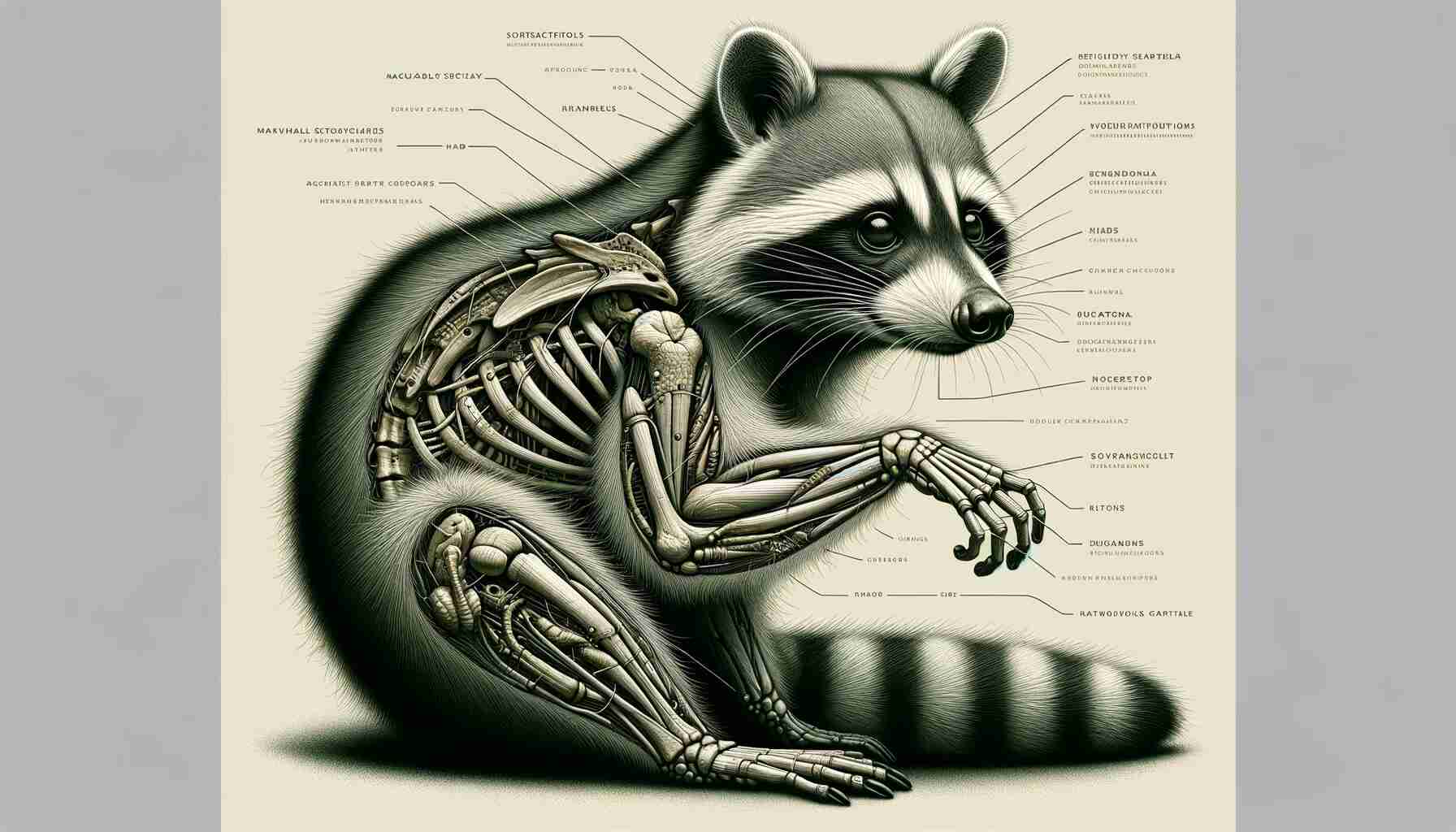
Physical Attributes
Raccoons possess unique physical attributes that enable them to thrive in their diverse habitats. Let’s take a closer look at their anatomy, sensory capabilities, and lifespan:
Anatomy and Body Structure
1. Skeletal System
Raccoons have a sturdy skeleton that provides support and stability. Their limbs are adapted for climbing, and their bones are robust, allowing them to withstand the physical demands of their active lifestyle.
2. Muscular System
Raccoons have well-developed muscles that give them strength and agility. Their strong muscles are particularly important for climbing trees, swimming, and digging.
Dexterity of Hands
Raccoons are known for their incredibly dexterous front paws, which are almost hand-like in their abilities:
1. Manual Abilities
Their front paws have five fingers, allowing for precise manipulation of objects. Raccoons can open containers, turn doorknobs, and even unzip backpacks.
2. Tool Use
While not as proficient as some primates, raccoons have been observed using tools in the wild. For example, they may use sticks or rocks to extract insects from tree bark or access food hidden in crevices.
Lifespan
1. Average Lifespan
In the wild, raccoons typically have an average lifespan of 2 to 3 years. However, their longevity can vary based on factors such as habitat, predation, and disease.
2. Factors Affecting Lifespan
- Predation: Young raccoons are vulnerable to predation by larger mammals, birds of prey, and even other raccoons.
- Disease: Raccoons can be susceptible to diseases such as rabies and distemper, which can significantly impact their lifespan.
- Human Interaction: Urban raccoons face additional risks due to interactions with humans, including vehicle collisions and conflict situations.
Raccoons’ physical attributes, including their strong skeleton, manual dexterity, sensory capabilities, and adaptation to a variety of environments, contribute to their success as a species. Their average lifespan reflects the challenges they face in the wild and in human-dominated landscapes.
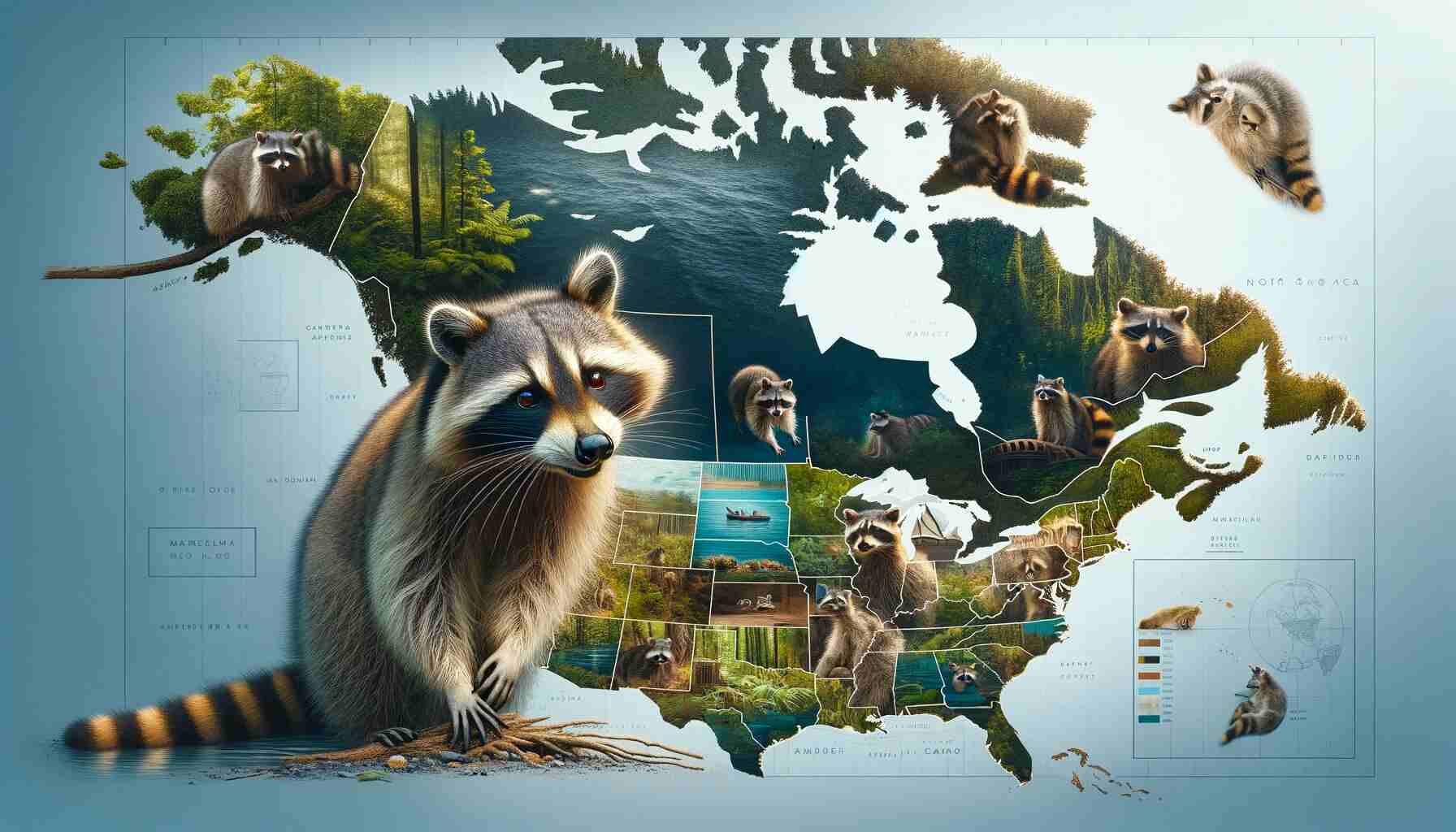
Habitat and Distribution
Natural Range
Raccoons have a native range primarily in North America, and their distribution extends from southern Canada to Panama. Some key points about their natural range include:
1. Native Range
Raccoons are native to North America, and they are commonly found in the United States and Canada. Their presence spans from the Atlantic to the Pacific coast.
2. Geographic Distribution
Raccoons are highly adaptable and can thrive in a variety of ecosystems, including deciduous forests, mixed woodlands, wetlands, and urban areas. They are known to inhabit both rural and urban landscapes, making them one of the most versatile mammals in North America.
Adaptability to Urban Areas
1. Urbanization Trends
Raccoons have demonstrated a remarkable ability to adapt to urban environments. As cities have expanded, raccoons have followed suit, capitalizing on the available resources in urban areas. This adaptability is due in part to their generalist diet and curiosity.
2. Urban Habitats
In urban areas, raccoons can be found in parks, residential neighborhoods, and even commercial districts. They often den in attics, crawl spaces, and abandoned buildings. Access to food sources such as trash cans and pet food also attracts raccoons to urban environments.
Preferred Habitats
1. Forests and Woodlands
In their natural habitat, raccoons thrive in deciduous and mixed forests, where they make use of tree hollows and leafy dens for shelter. They are excellent climbers and swimmers, which aids them in navigating forested areas.
2. Wetlands and Riparian Zones
Raccoons are commonly found near water sources, including rivers, lakes, and wetlands. These areas provide a rich source of food, such as crayfish and aquatic plants, and are essential for their survival.
3. Urban and Suburban Environments
Raccoons’ adaptability allows them to take advantage of urban areas, where they scavenge for human food and often den in human-made structures. While their presence can be a source of fascination for city dwellers, it can also lead to conflicts due to property damage and disease concerns.
Raccoons’ ability to thrive in various environments, including both natural and human-altered landscapes, makes them a unique and resilient species. Their adaptability has contributed to their widespread distribution and success as a species.
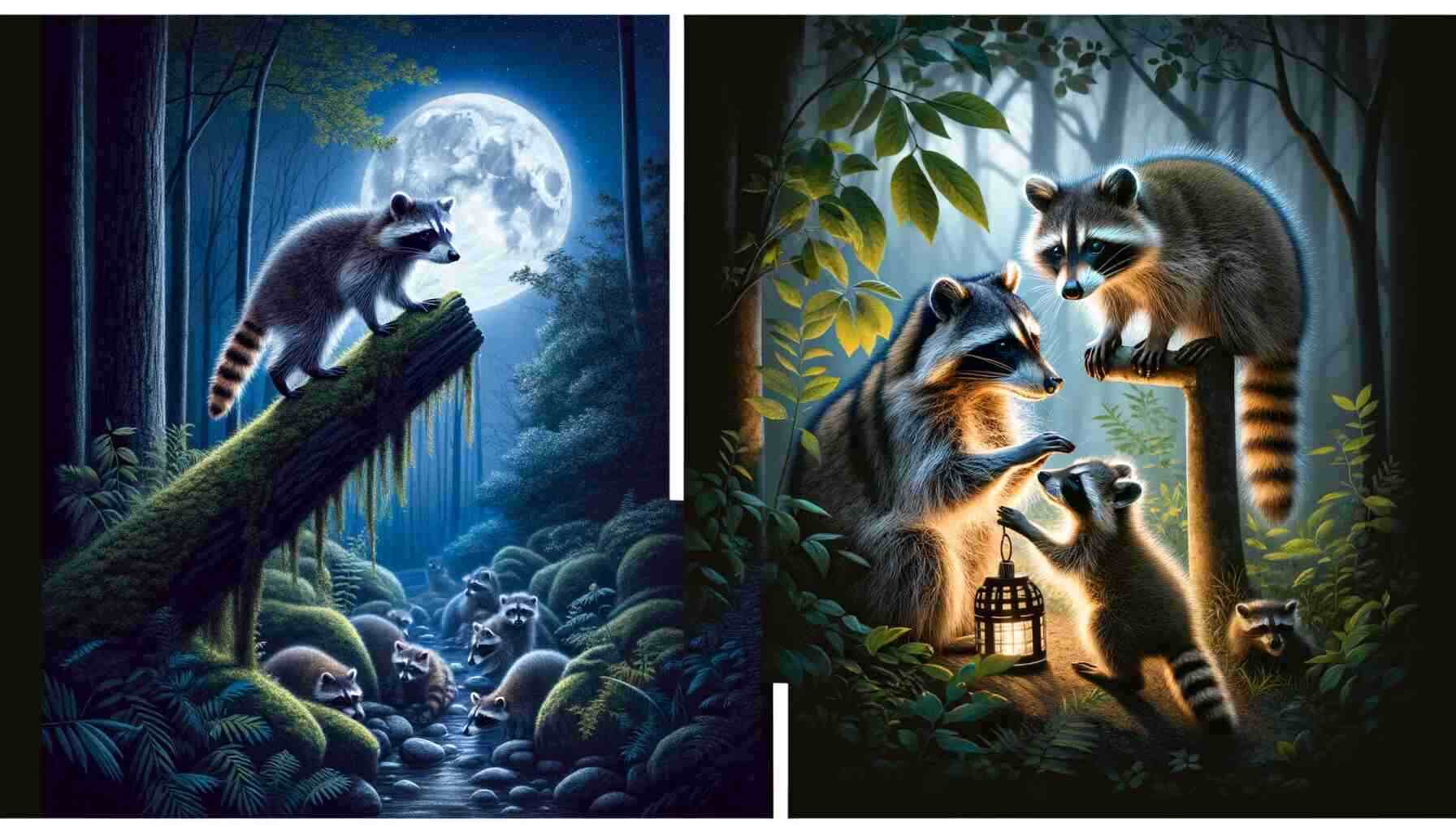
Behavior and Social Structure
Nocturnal Behavior
Raccoons are primarily nocturnal animals, which means they are most active during the night. Here are some key aspects of their nocturnal behavior:
1. Nighttime Activities
Raccoons are well-suited for nighttime activities due to their excellent night vision. They use the cover of darkness to forage for food, as well as to avoid predators and human disturbances.
2. Adaptations for Nightlife
Their large eyes are adapted for low-light conditions, and their facial mask helps reduce glare from streetlights and car headlights. Their keen sense of smell and sharp hearing also play crucial roles in navigating the night.
Social Structure
1. Solitary or Social Animals?
Raccoons are often described as solitary animals, but they are not entirely antisocial. Their social structure is more complex than it might seem:
- Solitary Behavior: Raccoons are generally solitary in nature, and adult males, in particular, tend to be solitary wanderers. They may establish territories and defend them from other males.
- Maternal Bonds: Female raccoons are known for their strong maternal instincts. They care for their young, called kits, in dens during their early weeks of life. Female raccoons may form loose associations with other females, especially related individuals.
- Transient Associations: In some cases, raccoons are observed in loose groups, especially in areas with abundant food sources. These groups are not true social structures but rather transient associations formed around shared resources.
Communication
Raccoons communicate with each other primarily through non-verbal cues, but they do produce various vocalizations and physical signals:
1. Vocalizations
- Chittering: High-pitched noises often used by mothers to communicate with their kits.
- Growling and Hissing: Vocalizations during confrontations or territorial disputes.
- Chirping: A form of communication between raccoons, particularly during mating season.
2. Body Language
- Postures: Raccoons use body postures to convey dominance or submission.
- Facial Expressions: The mask-like facial markings may serve as visual cues in communication.
Raccoons’ ability to communicate with each other is essential for coordinating social interactions and avoiding conflicts, particularly during mating and territorial disputes.
Mating and Reproduction
1. Reproductive Cycles
Raccoons typically have one breeding season per year, with the peak of mating occurring in late winter or early spring. Here are some key points about their mating and reproduction:
- Courtship: Courtship involves chasing and vocalizations, with males pursuing females.
- Gestation: The gestation period for female raccoons is approximately 63 days.
- Litter Size: Raccoons give birth to litters of usually 2 to 5 kits, although larger litters are possible.
- Maternal Care: Mothers are highly attentive to their kits, nursing and protecting them in dens until they are old enough to accompany her on foraging trips.
Raccoons’ reproductive strategies, including their maternal care and mating behaviors, are fascinating aspects of their biology and behavior.
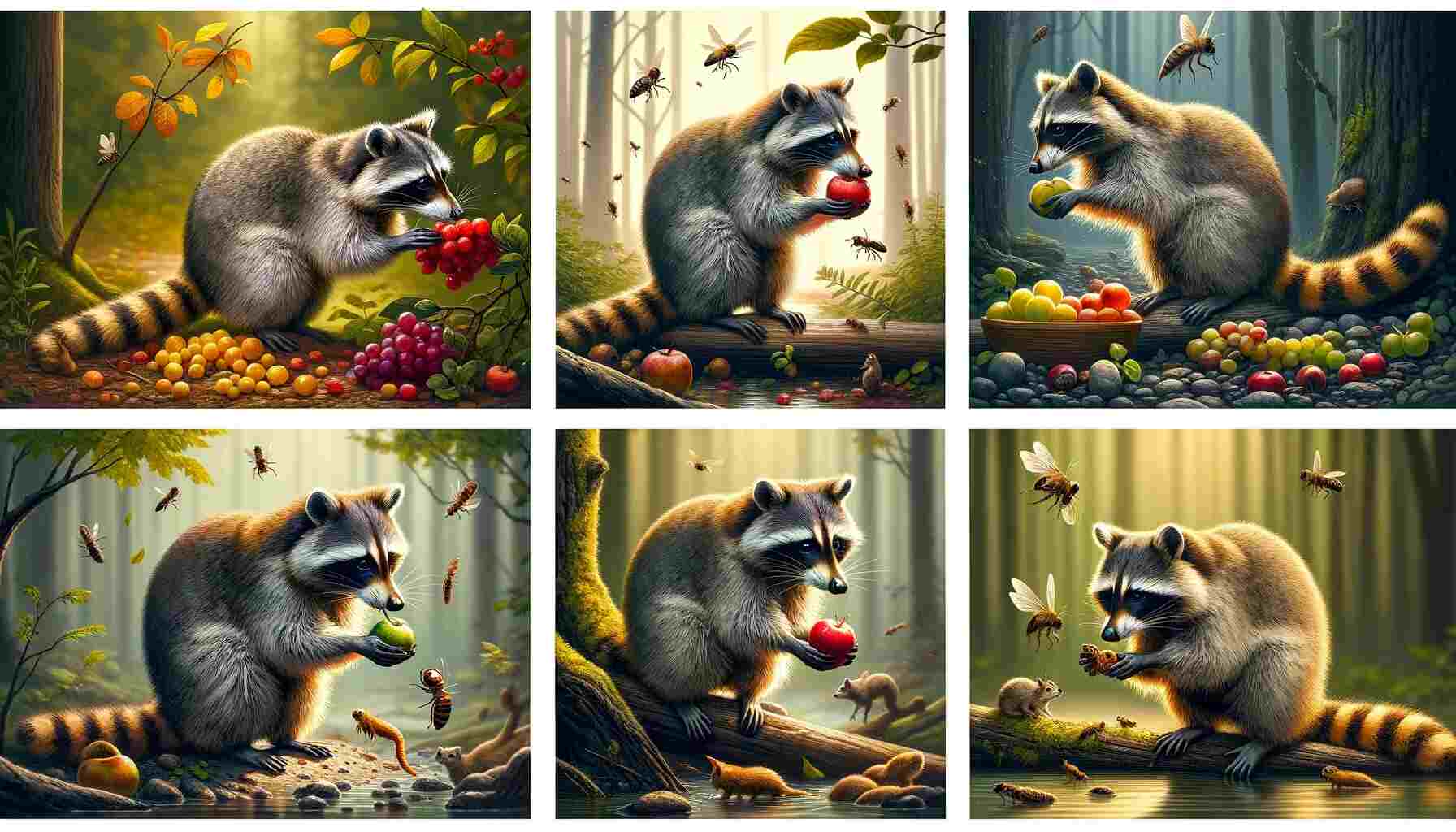
Diet and Feeding Habits of Raccoon
Raccoons are renowned for their omnivorous diet and opportunistic feeding habits. Let’s delve into their dietary preferences and foraging techniques:
Omnivorous Nature
1. Dietary Flexibility
Raccoons are classified as omnivores, meaning they have a diverse diet that includes both plant and animal matter. This dietary flexibility allows them to exploit a wide range of food sources, making them successful in various habitats.
2. Preferred Food Types
Raccoons consume a variety of foods, including:
- Invertebrates: Insects, crayfish, and other small aquatic creatures.
- Vertebrates: Small mammals, birds, and bird eggs.
- Fruits and Vegetation: Berries, nuts, acorns, and agricultural crops.
- Human Food: Raccoons are notorious for raiding trash cans and scavenging discarded human food.
Common Food Sources
1. Natural Diet
In their natural habitat, raccoons rely on seasonally available food sources. They often feed on:
- Fruit: They are particularly fond of fruits like apples and berries.
- Invertebrates: Aquatic invertebrates, such as crayfish, are an important part of their diet in wetland areas.
- Small Mammals: Raccoons are opportunistic hunters and may catch small mammals like rodents.
- Birds: They can climb trees to access bird nests and eggs.
2. Human-Related Food Sources
In urban and suburban environments, raccoons are known for scavenging human food from trash cans, dumpsters, and pet food dishes. This behavior can lead to conflicts with humans and poses health risks.
Foraging Techniques
Raccoons employ several techniques to obtain food:
1. Hunting and Gathering
In their natural habitat, raccoons actively hunt for small prey and forage for fruits and nuts. Their dexterous front paws enable them to manipulate objects and extract food from crevices.
2. Manual Dexterity
Raccoons’ paws are highly adaptable, functioning almost like hands. Their ability to grasp objects and manipulate them with precision allows them to access food that might be otherwise inaccessible to other animals.
3. Tool Use (if applicable)
While not as common as in some other animals, raccoons have been observed using simple tools, such as rocks or sticks, to access food or water. This demonstrates their problem-solving abilities.
Raccoons’ varied diet and resourceful foraging techniques contribute to their adaptability and survival in diverse environments. Their ability to exploit both natural and human-made food sources is a testament to their intelligence and resourcefulness.
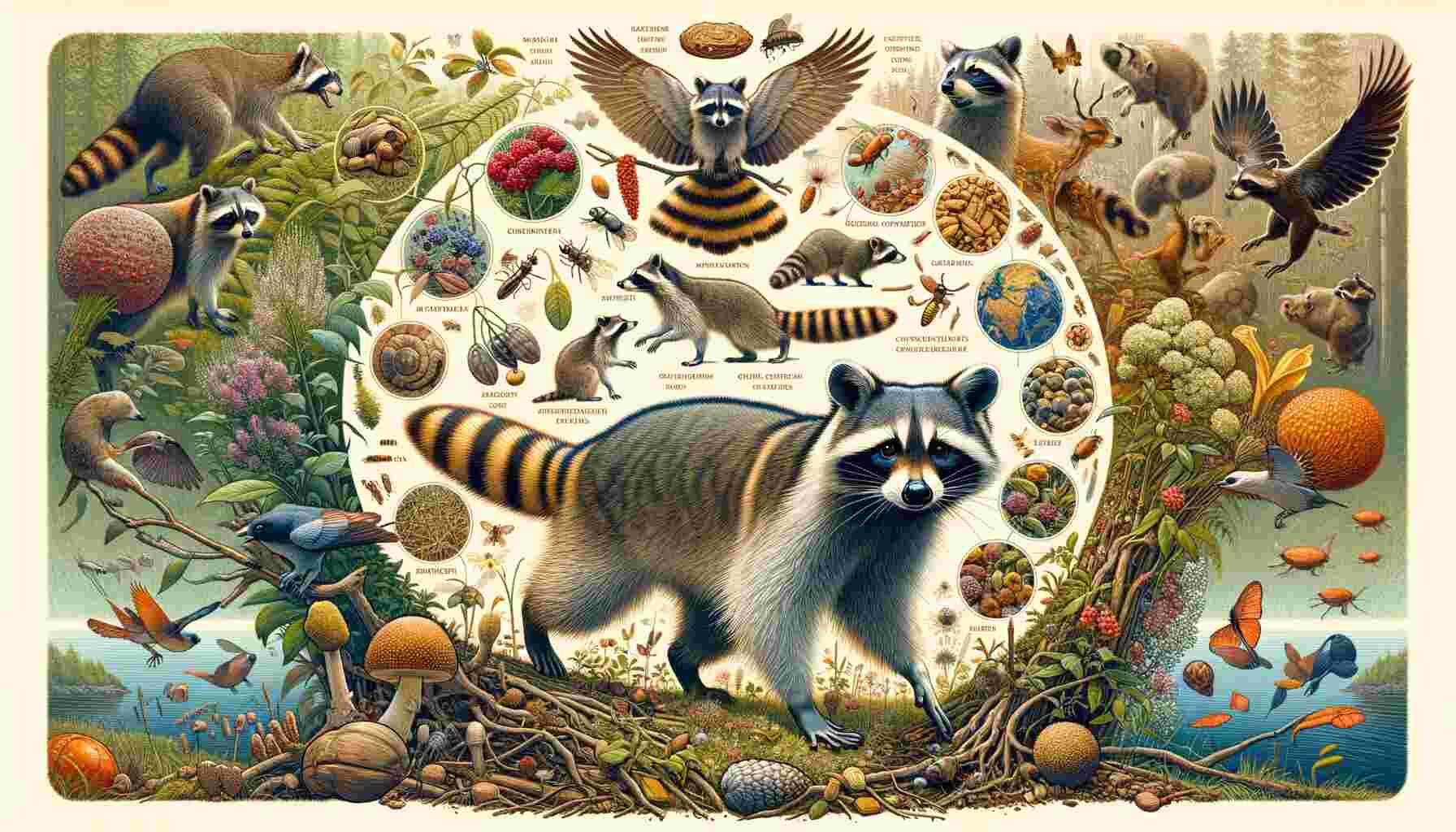
Role in Ecosystem
Raccoons play a significant role in ecosystems, often acting as keystone species. Let’s examine their ecological importance, their impact on food chains, and their role in seed dispersal:
Keystone Species
1. Impact on Ecosystem Health
Raccoons are considered keystone species because their presence or absence can have a profound impact on the overall health and balance of an ecosystem. They influence the abundance and behavior of various other species within their habitat.
2. Ecological Interactions
As opportunistic omnivores, raccoons affect the populations of their prey species, such as small mammals, insects, and crustaceans. By controlling these populations, they help maintain ecological balance.
Impact on Food Chains
1. Predation and Prey Relationships
Raccoons are both predators and prey. They consume a wide range of organisms, from insects to small mammals, influencing the populations of these species. At the same time, they themselves serve as prey for larger predators like coyotes and bobcats.
2. Trophic Level
Raccoons occupy a unique trophic level in food chains. Their diet includes both primary consumers (herbivores) and secondary consumers (carnivores), allowing them to act as mediators in energy transfer within ecosystems.
Role in Seed Dispersal
1. Seed Dispersal Mechanisms
Raccoons unwittingly contribute to forest regeneration by acting as seed dispersers. When they consume fruits, nuts, and other plant materials, they often transport seeds to new locations, aiding in the distribution of plant species.
2. Ecological Importance
This seed dispersal plays a crucial role in maintaining plant diversity and forest regeneration. Raccoons’ foraging habits help in the natural reforestation of areas they inhabit.
Raccoons’ status as keystone species underscores their importance in maintaining the ecological balance of the ecosystems they inhabit. Their influence on prey populations, position in food chains, and role in seed dispersal all contribute to the health and biodiversity of their habitats.
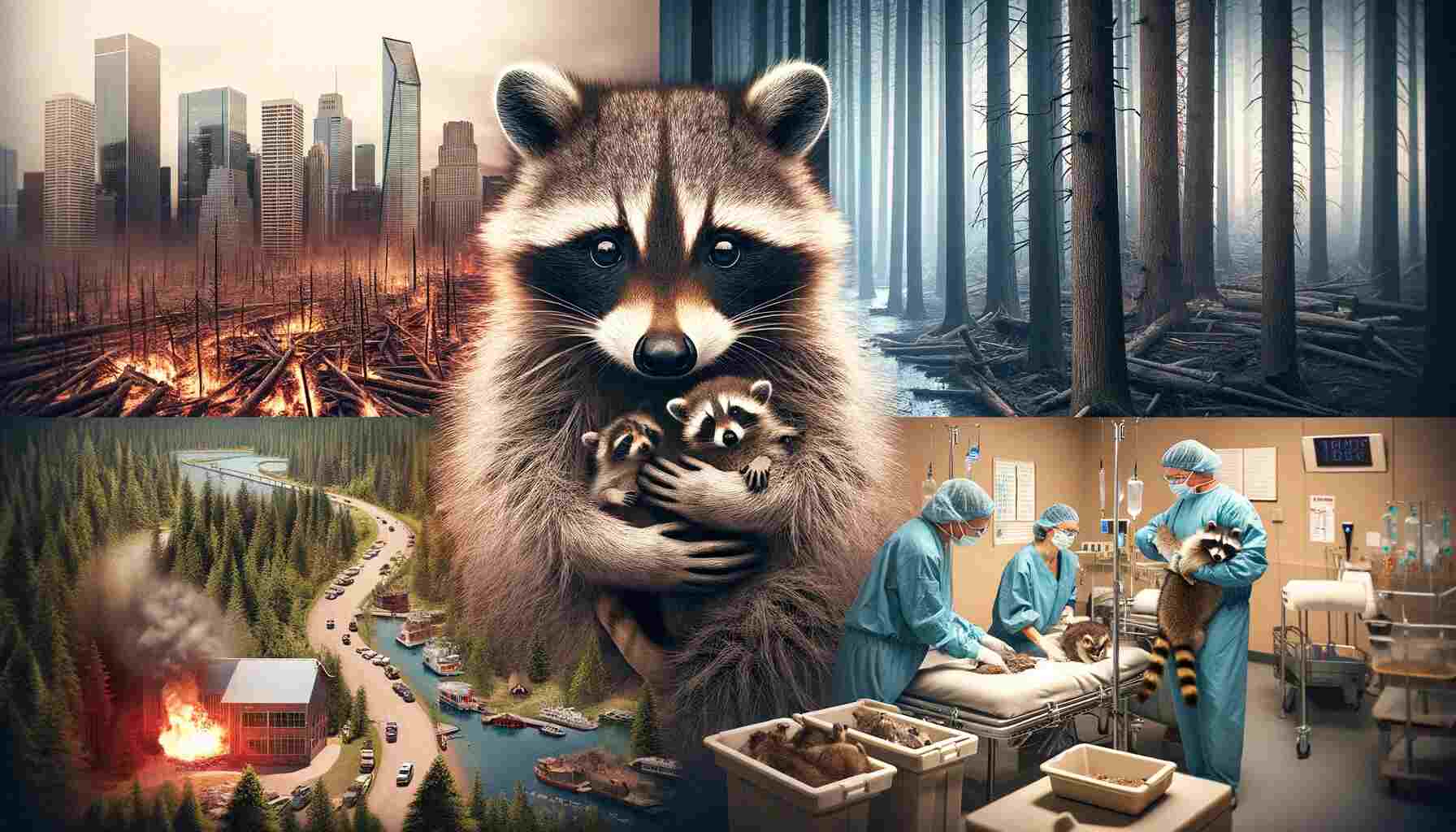
Conservation Status
Raccoons, while adaptable and widespread, face various threats to their survival. Here, we’ll discuss the conservation status of raccoons, the primary threats they encounter, and the conservation efforts aimed at protecting them:
Threats to Raccoons
1. Natural Predators
Raccoons have natural predators, including larger mammals like coyotes, bobcats, and birds of prey. These predators can significantly impact raccoon populations, especially young or vulnerable individuals.
2. Human-Related Threats
Raccoons encounter several threats from human activities:
- Habitat Loss: Urbanization and deforestation can reduce their natural habitat, pushing raccoons into closer proximity to humans.
- Vehicle Collisions: Raccoons are often victims of road accidents when they cross roads in search of food or mates.
- Disease: Raccoons can carry diseases like rabies and distemper, posing health risks to both wildlife and domestic animals.
- Nuisance Behavior: Raccoons’ scavenging behaviors, such as raiding trash cans, can lead to conflicts with humans.
Legal Protection
1. Conservation Laws and Regulations
Raccoons are protected by various wildlife conservation laws and regulations in different regions. These laws vary but generally aim to prevent overhunting and illegal trapping.
2. Hunting and Trapping Rules
Hunting and trapping of raccoons are regulated by wildlife management agencies in many areas. Seasonal restrictions and bag limits are in place to ensure sustainable harvests.
Conservation Efforts
1. Rehabilitation and Rescue Programs
Numerous wildlife rehabilitation centers and rescue organizations are dedicated to the care and rehabilitation of injured or orphaned raccoons. These programs help reintroduce rehabilitated animals to the wild when possible.
2. Research and Monitoring Initiatives
Scientific research plays a crucial role in understanding raccoon populations and their interactions with the environment. Conservationists study raccoon behavior, disease prevalence, and habitat use to inform conservation strategies.
Raccoons, while adaptable, are not immune to the threats posed by habitat loss, predation, and human activities. Conservation efforts are essential to ensure their continued presence in our ecosystems and to address conflicts with human populations.

Interactions with Humans
Raccoons often interact with humans, sometimes leading to conflicts and other interesting dynamics. Let’s explore their interactions with humans in more detail:
Human-Wildlife Conflict
1. Damage to Property
- Raccoons can cause damage to homes and property when they seek shelter in attics, crawl spaces, or chimneys. They may tear insulation, chew wiring, and create nests.
- They are notorious for raiding trash cans, which can result in scattered debris and a mess in residential areas.
- Raccoons may damage gardens and crops when foraging for fruits and vegetables.
2. Health Concerns
- Raccoons can carry diseases such as rabies, distemper, and leptospirosis. When bitten or scratched by a raccoon, humans can be at risk of contracting these diseases.
- Feces left by raccoons can contain parasites, including roundworms, which can pose health risks to humans and pets if accidentally ingested.
Raccoons as Pets
1. Legality and Ethics
- In some regions, it is legal to keep raccoons as pets, but it often requires permits due to their potential to carry diseases and become aggressive as they mature.
- Keeping raccoons as pets is discouraged by wildlife experts due to their complex care requirements, wild instincts, and the risk of disease transmission.
2. Challenges of Keeping Raccoons
- Raccoons are high-maintenance pets that require a lot of attention, a suitable enclosure, and a diet that mimics their natural one.
- As they grow older, raccoons can become increasingly challenging to handle, potentially posing risks to their owners.
Diseases and Zoonotic Concerns
1. Common Diseases
- Raccoons are known carriers of diseases such as rabies, which can be transmitted to humans through bites or scratches.
- Distemper, a viral disease, can also affect raccoons and can potentially infect domestic pets.
2. Risk to Human Health
- Close contact with raccoons, especially those exhibiting unusual behavior, can pose health risks to humans. It is essential to avoid approaching or feeding wild raccoons.
- Pets should be vaccinated against rabies to reduce the risk of transmission from raccoons.
Understanding the potential challenges and risks associated with raccoons is crucial for ensuring safe coexistence. It is generally recommended to appreciate raccoons from a distance in their natural habitat and take measures to mitigate conflicts, such as securing trash cans and protecting property from their entry.
Folklore and Cultural Significance
Raccoons have a rich history of folklore and cultural significance in various societies. Let’s explore their presence in Native American traditions, pop culture representations, and symbolism:
Native American Traditions
1. Cultural Beliefs and Stories
- In many Native American cultures, raccoons are regarded as clever and resourceful animals. They are often featured in stories and myths that highlight their adaptability and intelligence.
- Some tribes believe that raccoons possess the ability to deceive and outwit other animals, making them both admired and cautionary figures in folklore.
2. Ceremonial Use
- Raccoon pelts were historically used by Native American tribes for clothing and ceremonial purposes. The distinctive markings of raccoon fur made it a valuable and symbolic material.
Pop Culture Representations
1. Raccoons in Media
- Raccoons have been popular characters in books, cartoons, and movies. One of the most famous raccoon characters is Rocket from Marvel’s “Guardians of the Galaxy.”
- In animation, characters like “The Raccoons” and “Sly Cooper” have captivated audiences and contributed to raccoons’ pop culture presence.
2. Mascots and Icons
- Raccoons have been used as mascots for sports teams, schools, and various organizations. Their distinctive appearance and perceived cleverness make them appealing symbols.
- The raccoon has become an iconic figure associated with certain regions, particularly in North America.
Symbolism
1. Resourcefulness and Adaptability
- Raccoons are often seen as symbols of adaptability and resourcefulness, as they can thrive in diverse environments and creatively find food and shelter.
- Their masked faces symbolize mystery and cunning in some cultural contexts.
2. Personal Symbolism
- In some belief systems, individuals may identify with the raccoon as a spirit animal or totem, reflecting qualities like curiosity, intelligence, and adaptability.
Raccoons’ presence in folklore and popular culture highlights their status as intriguing and adaptable creatures. Their symbolism varies across different traditions and contexts, but they consistently represent qualities of cleverness and adaptability.
Interesting Facts and Myths
Raccoons are full of intriguing facts, myths, and trivia. Let’s uncover some of the most captivating aspects about raccoons:
Unusual Behaviors
1. Washing Hands
- Raccoons are known for “washing” their food by dunking it in water. This behavior is not about cleaning but is a sensory exploration to enhance their perception of texture and taste.
2. Climbing Skills
- Raccoons are excellent climbers and can ascend trees with ease. Their hind feet can rotate 180 degrees, allowing them to descend trees headfirst.
3. Purring Sound
- Raccoons can produce a purring sound when content or relaxed. This vocalization is often heard when mothers are nursing their kits.
Common Myths Debunked
1. “Raccoons Are Dirty Animals”
- While they may appear messy when raiding trash cans, raccoons are quite meticulous about personal grooming. They have a strong sense of cleanliness.
2. “Raccoons Wash Their Food Because They’re Thirsty”
- Contrary to the myth that raccoons wash their food due to thirst, it’s primarily a sensory behavior to assess the food’s texture and suitability for consumption.
Trivia
1. Night Vision
- Raccoons have exceptional night vision, thanks to a layer of cells in their eyes called the tapetum lucidum, which reflects light and enhances their ability to see in low light conditions.
2. Lifespan in Captivity
- Raccoons can live longer in captivity, sometimes reaching 20 years or more. However, their average lifespan in the wild is considerably shorter.
3. Raccoon Relatives
- Raccoons belong to the Procyonidae family, which includes other species like coatis and kinkajous, sharing some similarities in behavior and appearance.
These captivating facts and the debunking of common myths offer a deeper understanding of raccoons and their unique qualities. Their behavior and adaptability continue to pique human curiosity, making them a subject of fascination and study.
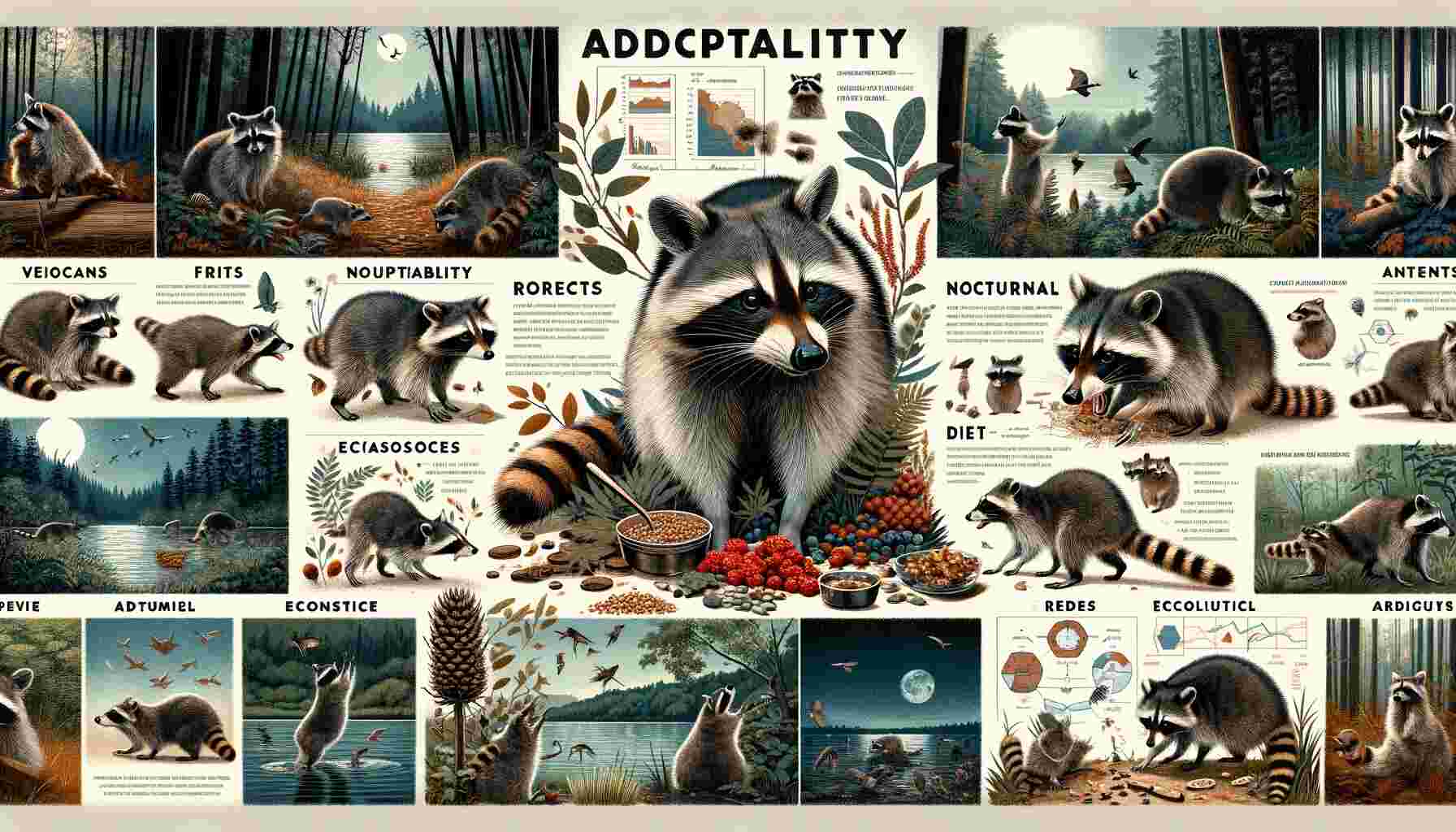
Conclusion
In our comprehensive exploration of raccoons, we’ve delved into every aspect of these intriguing creatures, from their biology and behavior to their interactions with humans and their cultural significance. Here are the key takeaways from our journey:
- Adaptability: Raccoons are incredibly adaptable animals that can thrive in various environments, from natural woodlands to urban areas.
- Nocturnal Lifestyle: Their nocturnal behavior, night vision, and dexterous paws make them well-suited for nighttime activities.
- Complex Social Structure: While often considered solitary, raccoons exhibit complex social behaviors, particularly related to mating and maternal care.
- Omnivorous Diet: Raccoons have an omnivorous diet, allowing them to eat a wide range of foods, both natural and human-related.
- Physical Attributes: Their strong skeletons, dexterous front paws, and keen senses contribute to their survival and adaptability.
- Ecological Importance: Raccoons are considered keystone species that impact ecosystems through their roles in food chains, seed dispersal, and population control.
- Conservation Challenges: They face threats from predation, habitat loss, and human interactions, which necessitate conservation efforts and legal protections.
- Cultural Significance: Raccoons have a presence in Native American traditions, pop culture, and symbolism, often representing qualities of cleverness and adaptability.
- Fascinating Facts: Their unusual behaviors, climbing skills, and sensory explorations make raccoons captivating subjects of study and fascination.
Raccoons are more than just masked bandits; they are integral components of our natural world, displaying remarkable adaptability and intelligence. As we continue to coexist with raccoons, it’s essential to appreciate their role in ecosystems and take measures to mitigate conflicts while respecting their unique qualities.

